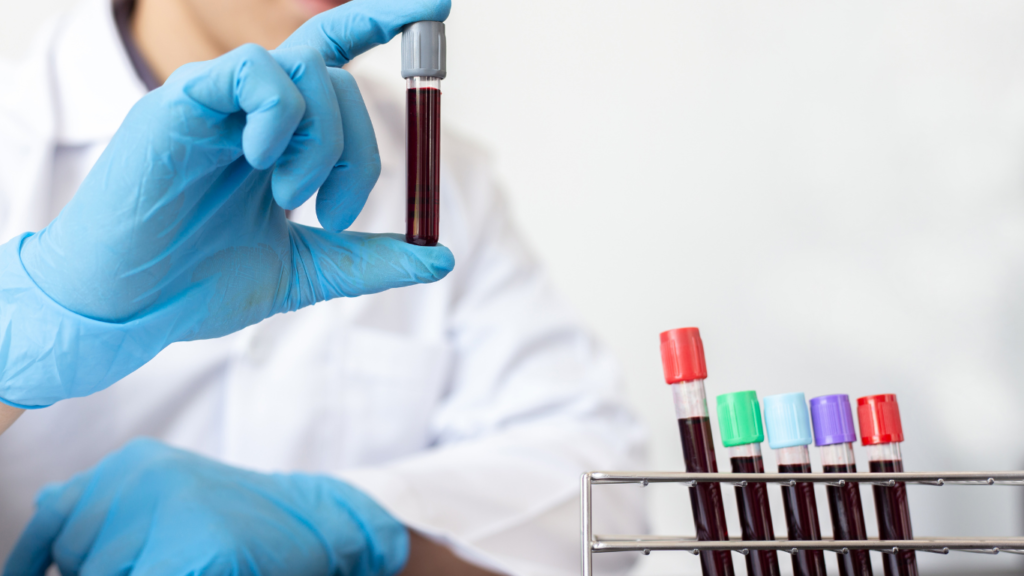
The Path to Diagnosis
Many people affected by Crohn’s disease or ulcerative colitis report that it took months or even years before receiving the correct diagnosis. Sadly, that’s often the case: on average, it takes about 1 to 5 years to diagnose a chronic inflammatory bowel disease (IBD). The reasons are varied – symptoms are often dismissed as irritable bowel syndrome or stress, appointments with specialists involve long waiting periods, and incomplete diagnostics, such as skipping stool samples or colonoscopies, are not uncommon.
So how does an IBD diagnosis actually work? If a patient notices signs of IBD, they should consult their general practitioner as soon as possible and discuss the symptoms. If initial findings, such as elevated inflammation markers in the blood, reinforce the suspicion of IBD, the patient is referred to a gastroenterologist for further evaluation. At this point, it’s helpful to research different specialists in your area – and if necessary, accept a longer travel time in order to find a doctor who is truly experienced with IBD.
What Diagnostic Methods Are Used?
A gastroenterology consultation typically begins with a detailed medical interview, known as anamnesis. It’s important to openly discuss your medical history and describe all symptoms as precisely as possible. Since there is no single parameter that can definitively confirm or rule out an IBD, a combination of different tests is necessary.
The first step is usually a physical examination. If abdominal pain is triggered during palpation, this may point to inflammation in the small intestine – a potential indicator of IBD.
Secondly, blood tests are used to assess nutritional deficiencies and the degree of inflammation. Inflammation markers include a high white blood cell count, an increased erythrocyte sedimentation rate, and elevated levels of C-reactive protein (CRP). These values, however, reflect general inflammation and are not specific to IBD. Bloodwork can also reveal low hemoglobin levels, which may indicate anemia – a common issue in IBD due to inflammation-related blood loss.
In addition, stool samples are examined to rule out bacterial infections, which can cause similar symptoms such as abdominal pain or diarrhea. The fecal calprotectin level is also measured, as it can offer additional clues about inflammatory activity in the gut. However, this value should be interpreted with caution, as it can sometimes be unreliable.
The fourth key method in diagnostics includes gastroscopies and colonoscopies. These are among the most reliable tools for identifying changes in the mucosal lining, inflammation, ulcers, or other abnormalities in the digestive tract. Tissue samples (biopsies) can also be taken during these procedures and later analyzed in the lab.
Other diagnostic imaging methods such as ultrasound (sonography), computed tomography (CT), or magnetic resonance imaging (MRI) may also be used to detect intestinal wall thickening, strictures, abscesses, or fistulas.
Why Does Diagnosis Often Take So Long?
Despite the variety of available tests, it is still possible that IBD is not diagnosed for months or even years. This is often because other conditions – such as irritable bowel syndrome or food intolerances – are initially suspected. Additionally, blood and stool test results may appear normal, especially during periods of remission when inflammation is low. Even colonoscopies and biopsies can sometimes show no abnormalities and therefore offer no clear evidence of IBD. If there is uncertainty after an endoscopy, it may be advisable to repeat the procedure, including biopsy, after three to six months or to seek a second opinion. Above all, it’s important to stay persistent and not lose hope during what can be a lengthy diagnostic process.
Conclusion
If you notice early signs of IBD, it’s crucial to seek medical advice as soon as possible. A timely diagnosis and treatment can have a significant impact on the course of the disease – and greatly improve your quality of life.
Quellen
- Stiefelhagen, P. (2021). Nicht nur bei Durchfällen sollte der Hausarzt an eine CED denken. MMW – Fortschritte der Medizin, 163, 18. https://link.springer.com/article/10.1007/s15006-021-0205-0
- Ramspott, S., & Egert, G. Chronisch entzündliche Darmerkrankungen: Abgrenzung und Differenzialdiagnose erforderlich. https://www.trillium.de/zeitschriften/trillium-diagnostik/ausgaben-2018/td-heft-12018/innovation-und-markt/tests-fuer-chronisch-entzuendliche-darmerkrankungen-ced.html
- CED-Kompass. Diagnose einer CED. https://ced-kompass.at/dein-wissen/diagnose-einer-ced/
- Das Netzwerk Autoimmunerkrankter e.V. Chronisch entzündliche Darmerkrankungen: Symptome, Diagnose und Therapie von CED. https://www.nik-ev.de/ced-symptome-diagnose-und-therapie-von-ced/#:~:text=Die%20Diagnose%20von%20CED%20st%C3%BCtzt%20sich%20auf%20eine,Darmspiegelung%2C%20Ultraschalluntersuchungen%20und%20Bluttests%2C%20die%20Entz%C3%BCndungsmarker%20aufzeigen%20k%C3%B6nnen
- Takeda. Bildgebung. https://www.ced-trotzdem-ich.de/die-diagnose-verstehen/aufklaerung
- Care. CED: Eine einfache Untersuchung und die Diagnose steht?. https://www.meincareplus.de/de_DE/home/blog/darm/CED-Eine-einfache-Untersuchung-und-die-Diagnose-steht.html
A proven treatment for inflammatory bowel disease (IBD) is the so-called exclusive enteral nutrition (EEN).
Read more in our article: The Microbiome as a Key? – A New Therapy for Crohn’s Disease